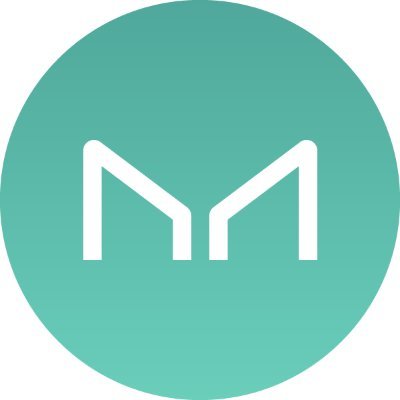After the significant rise in token prices, the future growth momentum and challenges of MakerDAO and DAI
Written by: Kunal
Compiled by: Deep Tide TechFlow

In this article, I will explore Maker DAO and its stablecoin DAI. Since July 2023, the MKR token has surged nearly 90%. The reasons are as follows:
MakerDAO has increased its exposure to real-world assets (RWAs). They currently hold $1.14 billion in U.S. Treasury bonds and $500 million in USDC, which earns yield through Coinbase Prime, helping to boost their income.
The DAO voted to reduce the remaining buffer cap from 200 million DAI to 50 million DAI. Any DAI above this threshold will automatically be used for periodic buybacks of MKR tokens and will be provided to the Uniswap V2 DAI/MKR pool to increase on-chain liquidity of MKR over time.
The DAI Savings Rate (DSR) has reached 5%. This is the yield users can earn by depositing DAI into the Spark Protocol, with income generated from RWAs and stability fees (when you repay debt by returning DAI, you are charged an outstanding fee proportional to the amount of DAI returned. This is known as the stability fee). Subsequently, the amount of DAI locked in the DSR has surged, accounting for about 27% of the total DAI supply.
1. DAI Performance Year-to-Date
Looking at the market capitalization of stablecoins over the past year, USDT is the clear winner, capturing market share from USDC and BUSD. There has been some FUD surrounding these two stablecoins, leading investors to turn to USDT. The initiation of the aforementioned measures has sparked interest in DAI, with its market share slowly approaching historical levels from 2021.

2. Maker's Use of RWAs
Currently, about 60% of Maker's interest income comes from RWAs. So how does this work?
Let me use Clydesdale as an example. Essentially, Clydesdale establishes an SPV and borrows DAI from Maker. This DAI is then exchanged for USDC through PSM and converted into cash dollars. These cash dollars are then used to purchase Treasury bonds, which are held by the SPV as collateral for the borrowed DAI. Clydesdale earns a small fee from managing the SPV, while the remaining interest from the U.S. Treasury bonds goes to Maker.
3. Income and Cost Analysis of DAI Collateral
I have made a high-level forecast of MakerDAO's income/expenses for the next 12 months, highlighting bull, fundamental, and bear market scenarios. This is important because MakerDAO's net income goes into the remaining buffer, and any amount exceeding 50 million will be regularly used for MKR token buybacks.
While most of the income increase comes from RWAs, this growth may stagnate as various vaults approach their debt limits. Any further growth can only be achieved if Maker launches new vaults to purchase RWAs.
Most of the remaining income will come from the stability fees of newly minted DAI and lending DAI to the Spark Protocol (Maker's DeFi sub-DAO) through D3M. In recent months, the D3M vault's cap has increased from 20 million to 220 million. This vault is a platform that directly lends to the Spark Protocol, allowing users to borrow DAI with other assets as collateral, at an annual interest rate of about 5.53%. Of this 5.53%, 10% goes to Aave, as Spark Protocol uses Aave's codebase.
For its operating expenses, the forecast for 2023 is similar to 2022, at around 24 million. I believe this could increase to about 30 million over the next 12 months. MakerDAO now supports more RWAs-backed vaults and plans to launch Maker as a new chain independent of Ethereum. These will increase expenditures on technology, development, oracle services, and ecosystem expansion, which account for a significant portion.
In the coming year, most of the income will be used to pay the 5% interest on the DSR. The amount of DAI locked in the DSR has significantly increased over the past three months. I expect this growth to taper off to a more sustainable level and have adjusted for past growth rates. Even so, I predict expenses will range between 120 million and 160 million. This will be a key factor that needs to be monitored month over month to assess the health of the protocol.
Considering the above factors, the supply-side deflationary pressure over the next 12 months is estimated to be around 3-12%.

4. DAI Supply Details
To remain profitable, the amount of newly minted DAI by Maker must continue to increase. I analyzed the changes in DAI across different vaults over the past three months. Of the increase in DAI, 56% comes from BlockTower Andromeda, and 22.4% comes from the increase in the D3M vault's debt ceiling. About 15% comes from vaults collateralized by ETH/stETH. The debt capacity of the BlockTower Andromeda vault is nearing its limit, and growth will slow.
Looking ahead, the D3M vault's debt ceiling is a good proxy for user demand for DAI. Looking at the numbers on Spark, many users seem to be depositing wstETH as collateral to borrow DAI. This DAI may enter the DSR, hoping that the 5% yield and 24 million SPK airdrop can offset the 5.53% cost of borrowing DAI.
The most expensive scenario for Maker is that the growth in the DSR comes from existing DAI rather than newly minted DAI.

5. Conclusion
Currently, I am optimistic about Maker. The use of RWAs serves as a buffer for paying the DAI interest in the DSR. The recent guidance from the Federal Reserve indicates that rates will remain high for a longer period, which is beneficial for Maker to benefit over the next two years. Here are the key points I will monitor to assess the health of the protocol:
The growth rate of DAI in the DSR (if the growth in the DSR exceeds the growth of newly minted DAI, this could be a concern to watch);
The debt ceiling of D3M and the utilization of DAI on the Spark Protocol (indicating demand for newly minted DAI. Particularly interesting after the SPK airdrop);
The launch of any new RWA vaults (more sources of income).












